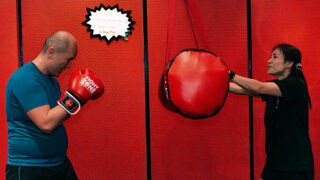The beginning of the year is a notorious time for people to want to get fit and commit to exercise or start a workout routine that tapers off all too soon. Here, top fitness experts in Singapore share advice on setting exercise goals and achieving them in the new year through strength training, HIIT workouts, Pilates and more. Whether you want to exercise to lose weight, get fit or to feel healthier, read on!
Advice from the experts: Setting goals and achieving them
Athleaders
Bringing fitness to your doorstep in Singapore, Athleaders’ team of experienced trainers offer a holistic and results-oriented approach to personal training. Alongside customised workout routines, each programme includes a complimentary dietician to tailor diet plans and a relationship manager to track your progress and ensure you’re hitting your goals – it’s definitely bang for your buck. We hear their clients have lost as much as 16 kilograms in just three months!
Hear from Bernhard Lieder, CEO
Who can benefit from personal training at Athleaders?
Personal training can benefit a wide range of individuals. We’ve trained hundreds of clients in Singapore with various fitness goals, abilities and backgrounds, from beginners and professional athletes, to people with health concerns or recovering from injury or surgery, the elderly and those with demanding schedules who want to lose weight and need a time-efficient workout that maximises results in shorter periods.
New to personal training? Tips on getting started.
Setting goals and focusing on consistency is important in the early days. Get in touch with the Athleaders team to arrange a complimentary consultation call. It’s a great opportunity to discuss your goals and kickstart your fitness journey in Singapore. What’s more, the fact that clients get access to a complete team of health professionals – a fitness coach, dietician and relationship manager – for the same price of a personal trainer elsewhere makes it perfect for those starting out on their PT journey.
Any advice on setting realistic fitness goals?
Certainly! Setting realistic goals is crucial for long-term success and motivation. Athleaders in Singapore specialises in personalising a fitness and nutrition plan with achievable milestones that align with your ultimate objective so you can get the results you want in as little as eight weeks!
How do you make sure your clients stay motivated and avoid slipping up?
We understand the challenges of busy schedules, which is why we eliminate the travel hurdles by coming to you, making it as easy as possible for you to stay consistent and disciplined – and we bring all the equipment with us! Varied workouts, regular check-in calls and recognising and praising efforts and successes, no matter how small, further enhance motivation and boost confidence.
How often should a client train to get fit?
We generally advise a minimum of three weekly sessions to lose weight, tone up and build strength. However, if your timetable doesn’t allow for a session with a trainer, we’ll offer you customised off-day routines for independent workouts. Meanwhile, our user-friendly app is a handy way to track your sessions and food intake, giving you a holistic overview of your progress.
Any new fitness programmes you’ll be incorporating in the New Year?
We’ve added yoga and Pilates to our services, with popular programmes including a combination yoga and personal training, or Pilates and personal training. It’s the best of both worlds! Clients can also get access to exclusive discounts on massages and supplements, meal delivery and more.
Hear from a client: “On average, I save around eight to 10 hours a month (almost 100 hours a year!), as I don’t have to travel to and from. Also, everything from my nutrition plan to my fitness programme is personalised.” – Venkatraman Sheshashayee
Special offer: EL readers can get a complimentary consultation call and 50 percent off their first session with Athleaders!
WhatsApp 9890 7224 | support@athleaders.co
athleaders.co
Fight Zone Singapore
Offering the perfect balance of Muay Thai and HIIT (high-intensity interval training) – all in a 30-minute workout – Fight Zone is an innovative quick training concept that incorporates a heart-rate based system to monitor training in real-time and push you within your limits.
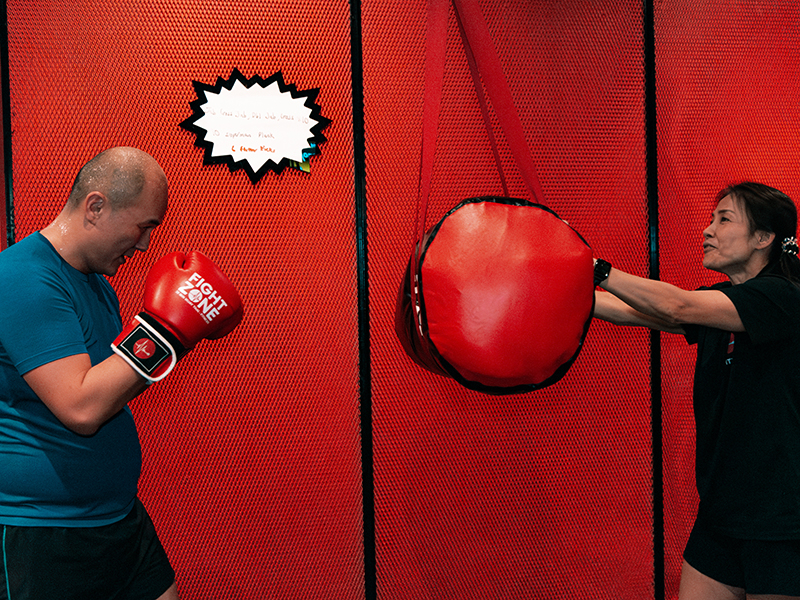
Hear from Jo, fitness manager of Fight Zone
Who can benefit from Fight Zone?
Muay Thai and high-intensity movements improve mobility and functional fitness, so the gym workouts are great for anyone in Singapore who wants to get fit, lose weight and learn a new martial arts skill. The fact that it is heart-rate monitored means people with different fitness levels can thrive – and our coaches are on hand to help, too.
How often should a client train to get fit?
Three times a week. However, for those who are starting a routine, it’s about building a fitness lifestyle, so even once or twice a week is enough. As your fitness level increases, you will start enjoying it more – and we all know that if you do something that you actually enjoy, it won’t feel that exhausting!
What are your tips for someone who might be New to Muay Thai fitness?
Focus on finishing each 30-minute workout and feeling good afterwards. As you get fitter, the instructors will encourage you to work harder according to your heart rate on the screen.
Any advice on setting realistic fitness goals?
As you improve, we’ll help you set realistic goals based on your current fitness level. In the early stages, this could be frequency or duration of exercise. As the heart and body gets stronger, weight loss and muscle gain can be added to goals.
Any new fitness programmes you’ll be incorporating in the New Year?
This year, we’ll be focusing more on one-on-one sessions with trained instructors so that members can learn and refine new Muay Thai techniques during their sessions.
How else can Fight Zone help?
Having a trainer during class times allows you to focus on just showing up. You don’t need to book ahead or worry about being late for the class as your 30 minutes only starts once you’re ready.
Hear from a client: “This is a no-fuss 30-minute workout. There is no schedule for this HIIT club, so it’s very convenient for people who have a tight schedule like mine.” – Maggie Tai
AMK Hub, Suntec City, Velocity and Tai Seng
fightzonesg.com
Flex Studio Singapore
Hong Kong’s premier Classical Pilates studio is now open in Singapore. The spring-based resistance training system of exercises are tailored to your needs and designed to create long, lean muscles and build endurance without the risk of injury.
Hear from Heather Thomas, founder, director, lead educator and regional master trainer
Who can benefit from training with Flex Studio?
Everyone! Classical Pilates suits all people in Singapore, no matter their fitness level, age or gender, but it’s especially beneficial for pre- and postnatal mums wanting to lose weight, anyone who experiences back pain or is recovering from injury, and athletes who want to improve their sports performance and general fitness conditioning.
How often should a client train to get fit?
It would be great to see clients at the studio three times a week for maximum benefits in minimum time. Offering private, trio and group sessions, the workouts are led by highly certified senior instructors for amazing physical and mental benefits.
What are your tips for a beginner at Flex Studio?
The initial session is a private 55-minute assessment with a trainer to discuss your goals and prepare a workout plan for you. We’ll take into account how frequently you plan to come to the studio, your timeframe for meeting expectations, and preference for group or private sessions. (Often the sweet spot is a mix of both!)
Any advice on setting realistic fitness goals?
Be realistic about outcomes – Rome wasn’t built in a day, and regaining fitness will take a little time. Also, don’t set the bar too high: if you haven’t trained for years, it’s probably best not to sign up for five classes each week initially!
How do you make sure your clients stay motivated and avoid slipping up?
Combining competition (with oneself or others) with a specific goal can give powerful results. Having that extra motivation to lose weight, get better, be healthier and become fitter keeps the journey positive and rewarding.
Any new fitness programmes you’ll be incorporating in the New Year?
We’ll be rolling out “30 Day Pilates Challenge” programmes, as well as introducing Pilates Barre Hybrid and Yamuna Body Rolling classes. Watch this space!
Hear from a client: “Once in a while you meet people who make an indelible impression and change your life for the better. These people are called Pilates instructors. At Flex, every instructor I’ve worked with has fundamentally changed me for the better, in both small and large ways. I couldn’t imagine my life now, without regular training at Flex.” – Lindy Cheng
Special offer for EL readers: Get a 55-minute private assessment trial for $98 (usually $150) and three Classical Pilates group classes for $198 (usually $297). Bookings essential. Valid until 30 June 2024.
#05-02 Palais Renaissance, 390 Orchard Road
9111 6855 | flexhk.com/singapore
UFIT
UFIT provides a unique, holistic and integrated approach to health and fitness in Singapore, with access to all of their one-on-one services in one programme. This means clients get a team of experts working together to help you take control of your health, lose weight, achieve your goals and get long-lasting results.
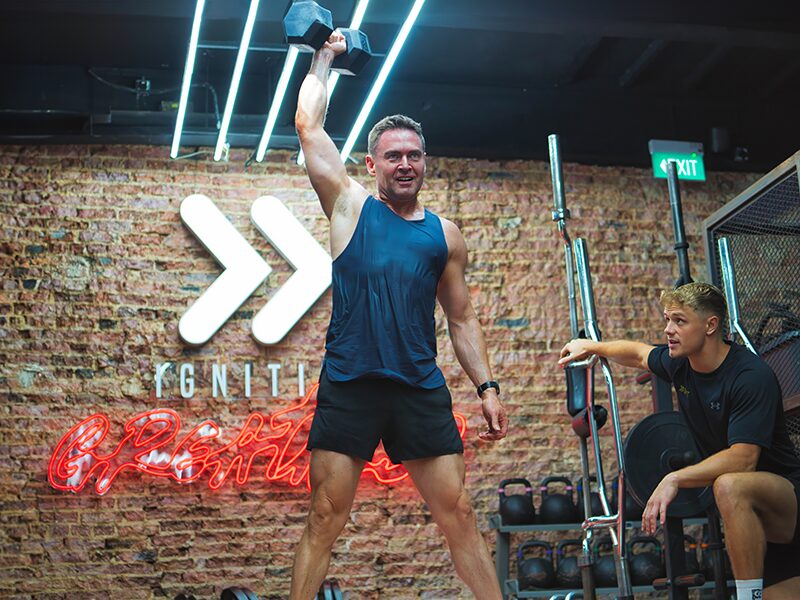
Hear from Declan Halpin, brand director
Who can benefit from training with UFIT?
Everyone and anyone! We go beyond helping people lose weight, supporting clients with different goals and at different life stages – whether it’s navigating menopause, returning to training after having a baby, overcoming an injury or illness, or training for a marathon. We provide a support network through our “Circle of Care“ that’s able to help clients achieve their goals, whatever they are.
How often should a client train to get fit?
It really depends on your goals and what you are doing outside of the gym. Results come from consistency and finding a sustainable routine that works for you and your lifestyle.
Any advice on setting realistic fitness goals?
When it comes to health and fitness, setting clear and specific goals is crucial, so we recommend using the 1-3-5 method to get fit and lose weight. This is a simple and effective goal-setting technique that involves identifying one big health and fitness goal, three targets and five strategies to achieve each target.
How do you make sure your clients stay motivated and avoid slipping up?
We make sure every client has a goal in place and is training with intent and purpose to achieve that goal. We also carry out movement and fitness tests at the start of a client’s programme so we can set benchmarks and measure progress and check in every six weeks to see if everything is on track or if the programme needs to be altered.
Any new fitness programmes you’ll be incorporating in the New Year?
We’ve just launched a special programme for new clients. The UFIT Ignition Programme is a comprehensive 10-week health and fitness programme, which gives you all the support you need to get fit, lose weight and hit your biggest goals. You’ll get two PT sessions a week, three nutrition consultations, an in-health assessment from UFIT’s exercise physiologist, unlimited classes and a body composition assessment at the beginning, middle and end. It’s the perfect way to kickstart your health and fitness!
Hear from a client: “The service at UFIT is exceptional. From personal training to physio to group classes, there is high-quality expertise in all areas. My PT provides a tailored programme to my specific needs in a fun and motivating way. The progress I have made in two years is phenomenal and that is down to the people and service UFIT provides. Highly recommend!” – Charlotte Dickenson
Special January promotion offer: Until 31 January 2024, join the Ignition Programme and get a 20% discount on UFIT‘s usual session-by-session rates.
Club Street, One-North and City Hall
ufit.com.sg/fitness/personal-training
The Ripple Club
These low-impact aqua workouts burn calories like crazy. Led by experienced coaches, the invigorating training sessions use water resistance to deliver some serious results and are designed to improve strength, mobility and endurance.
Hear from Alicia Dedigama, co-founder
Who can benefit from aqua fitness?
Everyone – from pre- and postnatal mums looking to lose weight to people recovering from an injury, or those looking for a fun and inclusive workout without impact on the bones and joints.
How often should a client train to get fit?
We recommend that our clients join us for a class a minimum of two to three times a week. Why? You will feel the changes in your mood, body shape and general fitness, and you will build connections with other clients and instructors.
What are some tips for someone getting started with aqua workouts?
All you need is a one-piece swimsuit or shorts and a rashguard, along with a cap and a bottle of water and you are good to go! The Ripple Club caters to absolute beginners as well as non-swimmers, so you’ll feel part of the community in no time!
Any advice on setting realistic fitness goals?
Have a hard look at your schedule. When can you realistically fit in a quick exercise class? If it’s once or twice a week, then stick to that and book your classes early, so that when your schedule gets busier, exercise is already part of your routine!
How do you make sure your clients stay motivated and avoid slipping up?
We have a few “tricks” to keep it fun, such as refreshing our programmes and playlists, organising great events and challenges, as well as reminding our clients of their improvements. It’s always great to hear how far you’ve come. Because our community is so strong, our clients also check in one another if they miss a class and encourage them to join the next one!
Any new fitness programmes you’ll be incorporating in the New Year?
We will run a six-week Ripple Challenge from mid-January onwards, with only one habit to focus on every week. Each achievable goal stacks on the other so that you’ll feel amazing by the end of the challenge!
Hear from a client: “This is the perfect group fitness class for Singapore’s hot weather.” – Kris Parkinson
The Ripple Club operates from six luxury hotel pools in Tanjong Pagar, Somerset, Stevens, Clarke Quay, Katong and City Hall
9698 9202 | therippleclub.fit
U.P. Fitness
U.P. Fitness offers no-nonsense personal training and nutrition methodology in Singapore for those who mean business and want to transform their health, fitness and body composition.
 Hear from Raymond Klang, gym manager
Hear from Raymond Klang, gym manager
Who can benefit from training with U.P. Fitness?
Our personalised, goal-oriented training plans have helped thousands of clients achieve truly life-changing body transformations in remarkably short-time frames -whether your goal is fat loss, muscle building or improved health.
How often should a client train to get fit?
Three days a week. This is the absolute minimum one should do when seeking maximum results in a quick time frame. For those with busy, highly-stressed lives, this level of frequency strikes the perfect balance between stimulus and recovery.
Any advice on setting realistic fitness goals?
To keep yourself coming back to the gym, training needs to be fun but it also needs to have a focus. Setting yourself performance goals can provide the impetus to stay consistent through periods where you may want to flag. Assess your lifestyle, set SMART goals – that’s “specific, measurable, achievable, relevant, timely” – and hold yourself accountable.
How do you make sure your clients stay motivated when it comes to exercise and avoid slipping up?
Ask yourself, “What is the one thing that I can focus on that would make the biggest positive impact on my health and take me closer to my goals?” Focus on making a positive habit change in this area and, as you gain momentum and confidence, you can build from there.
An extreme change from “feast to famine” over the holiday period, when people decide to go on a New Year detox, can be unsustainable. Instead, the key to success is focusing on making healthy changes, understanding that you still need to fuel your body to perform optimally day to day and in the gym, and planning ahead.
How else can U.P. help?
Our professional trainers offer tailored support based on your individual goals and the timeframe you’re working toward. The focus is on developing positive habits that are sustainable, so you’ll be empowered to lead a healthier lifestyle with confidence.
Hear from a client: “U.P. has been a game-changer for my fitness and lifestyle in Singapore. I’ve learned to sustainably manage my nutrition, training and other life factors to keep me healthy.” – Krista Cruz
Ground floor, Manulife Tower, 8 Cross Street
360 Orchard Road, #B1-00 International Building
6536 8649 | upfitness.com.sg
AMP Lab
Established in 2009, AMP Lab is a one-stop health, fitness and performance centre in Singapore offering physiotherapy, exercise classes and sports services under one roof. Its customised strength and conditioning programmes use evidence-based practices to enhance muscular strength, endurance and power. You’ll better your Strava record in no time!
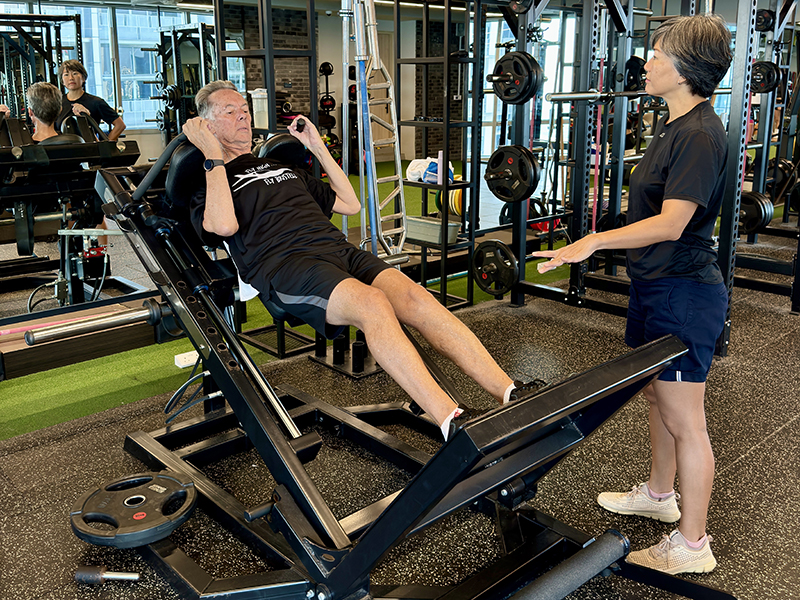
Hear from Etienne Ding, strength and conditioning coach
Who can benefit from training with AMP Lab?
Whether you’re recovering from an injury, aiming to enhance athletic performance, or simply looking to lose weight and improve your overall health, our tailored physiotherapy and strength training regimens are designed to meet unique needs in a supportive and inclusive environment.
How often should a client train to get fit?
The frequency varies depending on individual goals, fitness levels and lifestyle in Singapore. Generally, we recommend a balanced approach, with one to two strength training sessions per week, along with cardiovascular exercises and flexibility work. However, it’s crucial to strike a balance and allow adequate time for rest and recovery to prevent overtraining and injuries.
Any advice on setting realistic fitness goals?
It’s essential to define clear, realistic and challenging objectives based on your capabilities, aspirations and, above all, safety considerations. Our team has regular check-ins with clients to maintain motivation levels and keep them on track throughout their fitness journey in Singapore.
How do you make sure your clients stay motivated and avoid slipping up?
Maintaining motivation is crucial for long-term success. We employ a holistic approach, combining scientifically designed workouts with ongoing support from our trainers. Regular progress assessment and goal revisions keep workouts interesting and prevent monotony. We also encourage clients to celebrate small victories along the way, fostering a positive mindset and sustained motivation.
Tips for those who are just starting out?
For newcomers, we recommend starting with a thorough assessment conducted by our experienced physiotherapist or strength conditioning coach. This initial evaluation helps the team to understand your current fitness level, any specific health considerations, and your fitness goals, in order to develop a personalised training plan.
How else can AMP Lab help?
AMP Lab’s team of sports scientists and exercise physiologists will design an exercise and sports science programme to support your health and fitness goals in Singapore, while taking into account your needs and limitations. Our mission is to support clients to stay injury-free – or, for the more competitive individuals, to discover their limits without aches and pains.
Hear from a client: “Etienne Ding, strength and conditioning coach, closely monitored my progress and made adjustments to my training plan as needed. He provides guidance on proper exercise form and technique to prevent injuries and maximise effectiveness.” – Cookie Tan
79 Anson Road, #22-01
9667 0407 | amplab.sg
Ezfit
Founded in 2005 with the purpose of bringing fitness to your doorstep in Singapore, Ezfit’s qualified personal trainers go the extra mile to help you achieve your goals – quite literally! The team provides a holistic approach to health and fitness, offering advice on nutrition and lifestyle choices alongside personalised exercise sessions using the latest tech-based equipment. Book a complimentary phone consultation to kickstart your personal training journey.
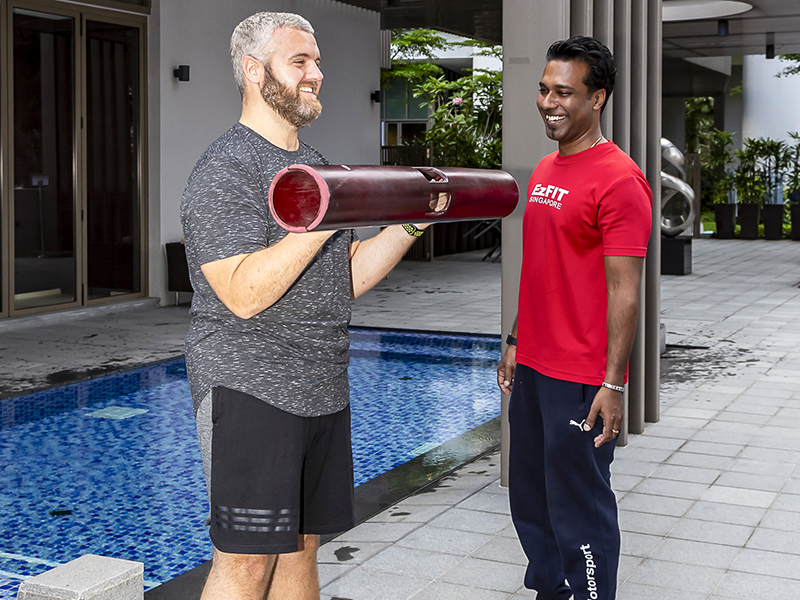
Hear from Vanan Nadarajan, co-founder
Who can benefit from Ezfit?
We offer customised training solutions for children and adults in the comfort of your home – and we’ll bring all the equipment, too. The fun workouts are centred around distinct objectives so that you keep your eye on the prize and don’t lose steam.
How often should a client train to get fit?
Once or twice a week depending on their schedule. Setting aside time for exercise is important and you may need to change your habits and lifestyle to make it happen. Ezfit is Singapore’s first 24/7 personal training company, so there really is no excuse!
Any advice on setting realistic fitness goals?
Start with small goals and work your way up. Think long-term rather than yo-yo exercise or diet plans. Fitness is not a destination, it’s a way of life.
How do you make sure your clients stay motivated and avoid slipping up?
When you’re invested in your health and fitness, you’re more accountable. We keep in touch with our clients via message and maintain in-session routines to build consistency – the secret weapon for achieving goals!
Hear from a client: “My hubby Chris and I used to train with Vanan while we were living in Singapore. Vanan got my bad posture fixed while he strengthened Chris’s weak lower back muscles so that he could go back to playing basketball. That’s what I call being objective and terrific.” – Tessa Myers
9 Ardmore Park
9007 9742 | ezfit.sg
FitNut Loft
The focus here is on strength training and Pilates workouts for women in their 40s and 50s who are looking to get fit and stronger, have more energy, lose weight and eliminate body pain as they age – all in a non-judgmental space across two locations.
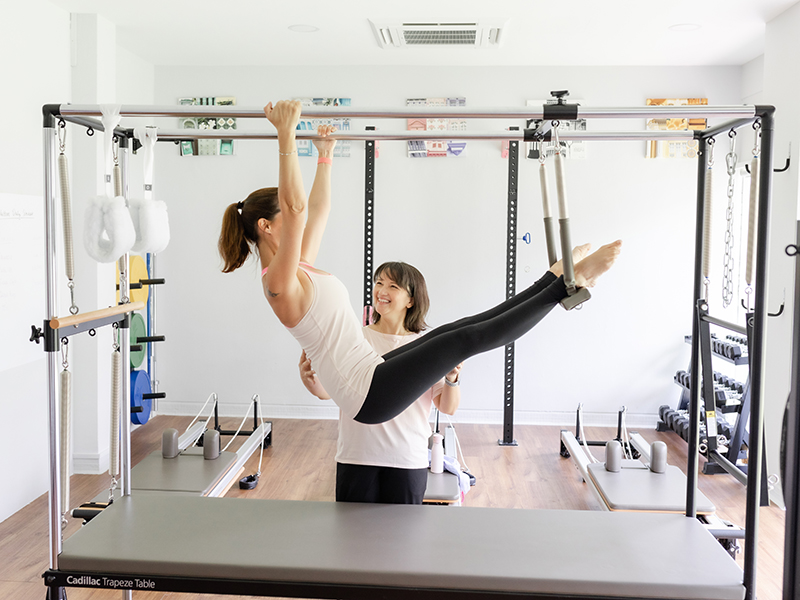
Hear from Aly Khairuddin, STOTT Pilates Instructor, Precision Nutrition Coach and owner
What are your tips for getting started and staying motivated?
Sit down and think about what you can do that will create change. You’ll find that you can’t change much of your environment, but you can change your efforts and actions. Once you realise that, you’ll see that actual change starts with what you put into making that change.
Begin with baby steps. Say you want to lose 10kg – that’s a big goal. You’ll be disappointed if you don’t achieve it. Instead, try asking: “What behaviours can I do that will result in a move toward that goal?” Change one behaviour at a time. For instance, protein is vital for weight loss. So, add an extra portion of lean protein daily to stave away hunger pangs. Once that becomes “easy”, add the next step!
It’s also important that you get your family to understand your plan. At home, you have control over what is purchased for your pantry, and what is served. You can ask your family to support your efforts to lose weight and explain why it’s important to you. With their buy-in, it will be easier for them to understand why you are prioritising your workouts.
Where do people normally slip up?
If weight loss is the goal, many people are doing the wrong type of exercise to meet that goal. Women, especially, don’t lift weights but instead head to the cardio machines to lose weight. However, lifting weights can result in far more calories burned in the long run. Plus, muscle burns calories; so, the more muscle you have, the more calories you burn.
People also overestimate how many calories they burn, while underestimating how many calories they’re consuming! They “reward” themselves with food by saying they “deserve to eat that”. However, the workout they’re doing probably only burns 150 to 250 calories, which is far less than the food they’re rewarding themselves with.
Another common slip-up is taking a break when on holiday. Doing so makes it harder to get back into the routine later! It’s far better to fit in three mini workouts while on holiday – even a 15-minute circuit routine will have huge benefits.
How else can FitNut Loft help?
We provide an environment that teaches and encourages the right behaviours for clients to achieve their goals; we even make it fun!
We don’t sell class packs, but we sell programmes that will keep our clients regularly coming two to three times a week. We blend strength training with Pilates and nutrition coaching, as this is the best combination for great health.
Each month, our clients have a short assessment to see where they are progressing and where they need work. We then discuss what changes can be made so that they can get back on track.
Even while on holiday, we send our clients videos and ensure that they have the equipment they need to follow our 15-minute Strong & Lean workout.
15 Mohamed Sultan Road, #03-01
2 Pandan Valley, #01-201
8686 8299| fitnutloft.com
Fitness Functions
This mobile personal training service will match your goals, budget and location. The team use advanced mobile equipment and incorporate body weight exercises to achieve a range of health and fitness goals for their clients in Singapore, from weight loss and rehabilitation, to improving balance and coordination, building stamina, and boosting performance and endurance.
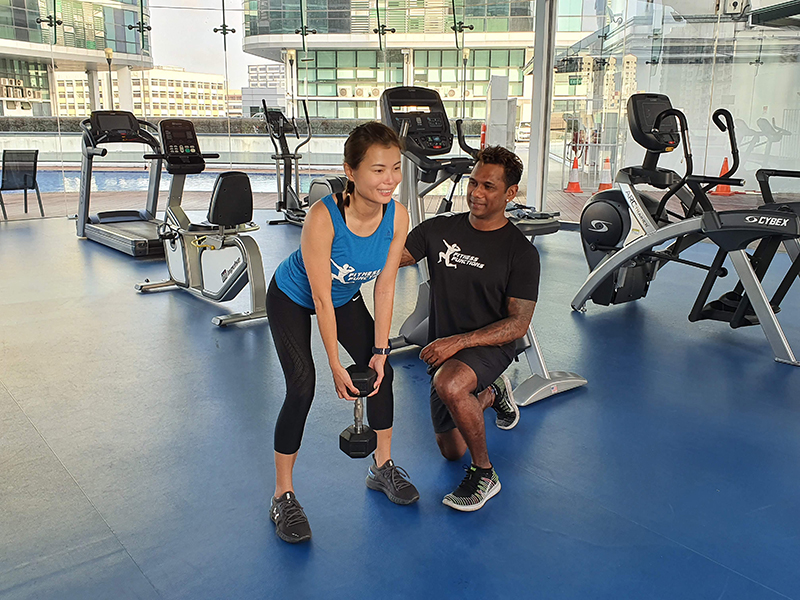
Hear from Ivan McCall, coach (15 years’ experience)
Who can benefit from training with Fitness Functions?
From training youths and the elderly, to pre- and postnatal mums and busy adults, the trainers are specifically certified and experienced in helping their clients become a better version of themselves.
How often should a client train to get fit?
Three times a week would be ideal to see results but consistency is just as important, if not more important, than frequency.
Any advice on setting realistic fitness goals?
It all starts with planning ahead – from your training day and time, to your food intake. The rest will automatically follow. When you fail to plan, you plan to fail.
How do you make sure your clients stay motivated and avoid slipping up?
We take it one day at a time, one session at a time. We also schedule weekly check-ins, set weekly goals and incorporate nutritional guidance into the regime. When you achieve every small goal that we set along the way, it motivates you to go a step further.
Any new fitness programmes you’ll be incorporating in the New Year?
No strict or unrealistic diets and definitely no fads. Just old school sweat, hard work and training to build a sustainable and healthy lifestyle, get fit and lose weight.
Hear from a client: “Ivan is extremely dedicated, consistent and focused. He has that special ability to balance things out without even me mentioning it to him. He’ll know the days I feel off, and the days I feel good and adjust the regime to accommodate me. He’ll push you to where you need to be, and make you want to do more. No workout has ever been the same.” – Nicole Lancaster
9654 7064 | fitness-functions.com
This article on fitness in Singapore first appeared in the January 2024 edition of Expat Living. You can purchase the latest issue or subscribe, so you never miss a copy!
Looking for more inspiration to get fit and lose weight? Visit our Health & Fitness section for more ideas.

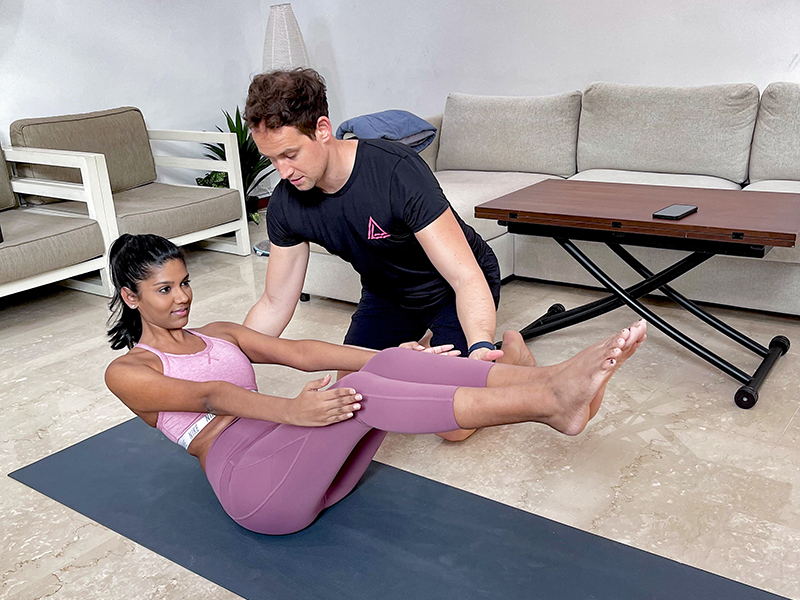
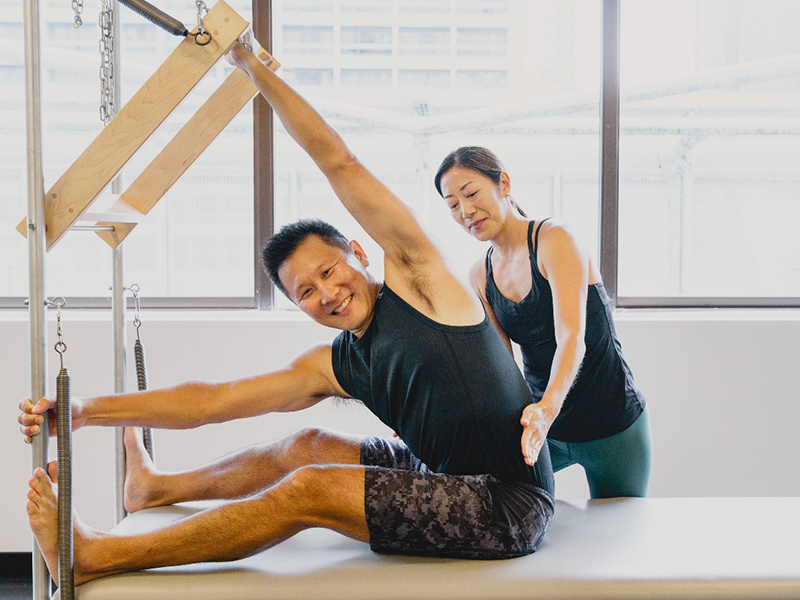
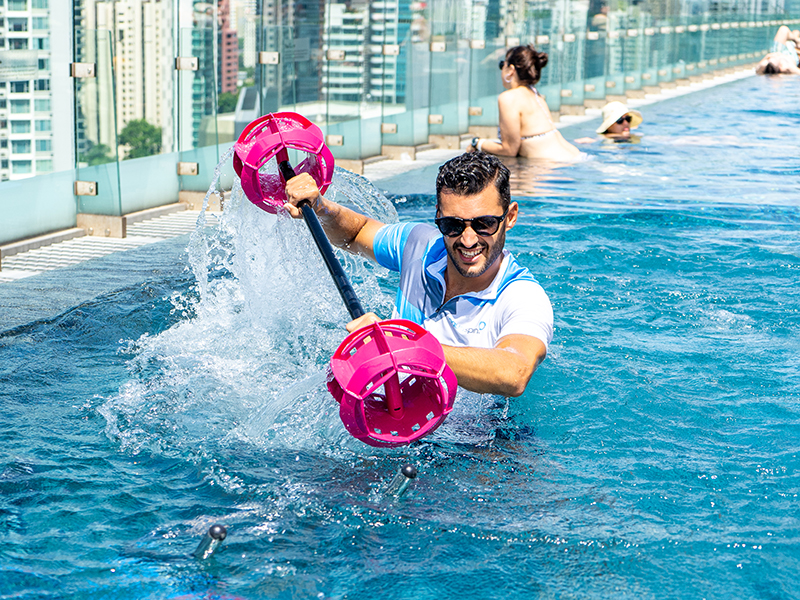
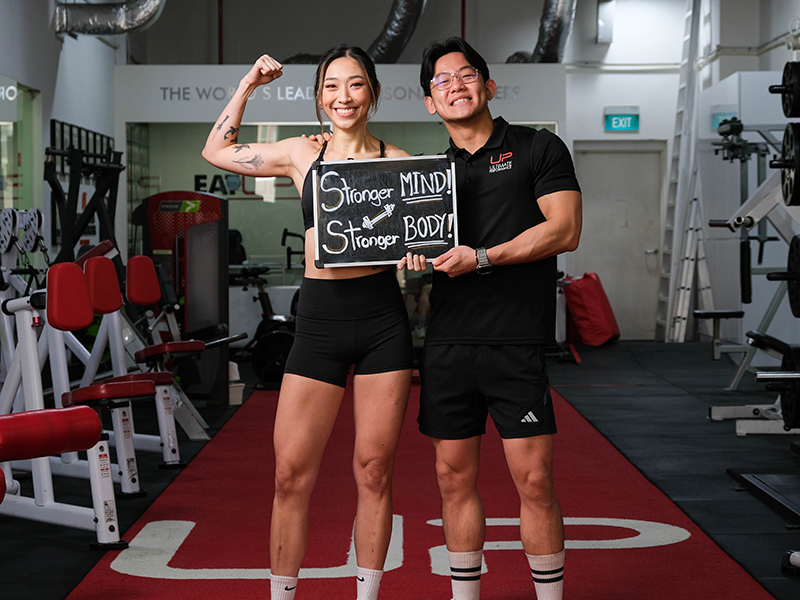 Hear from Raymond Klang, gym manager
Hear from Raymond Klang, gym manager



